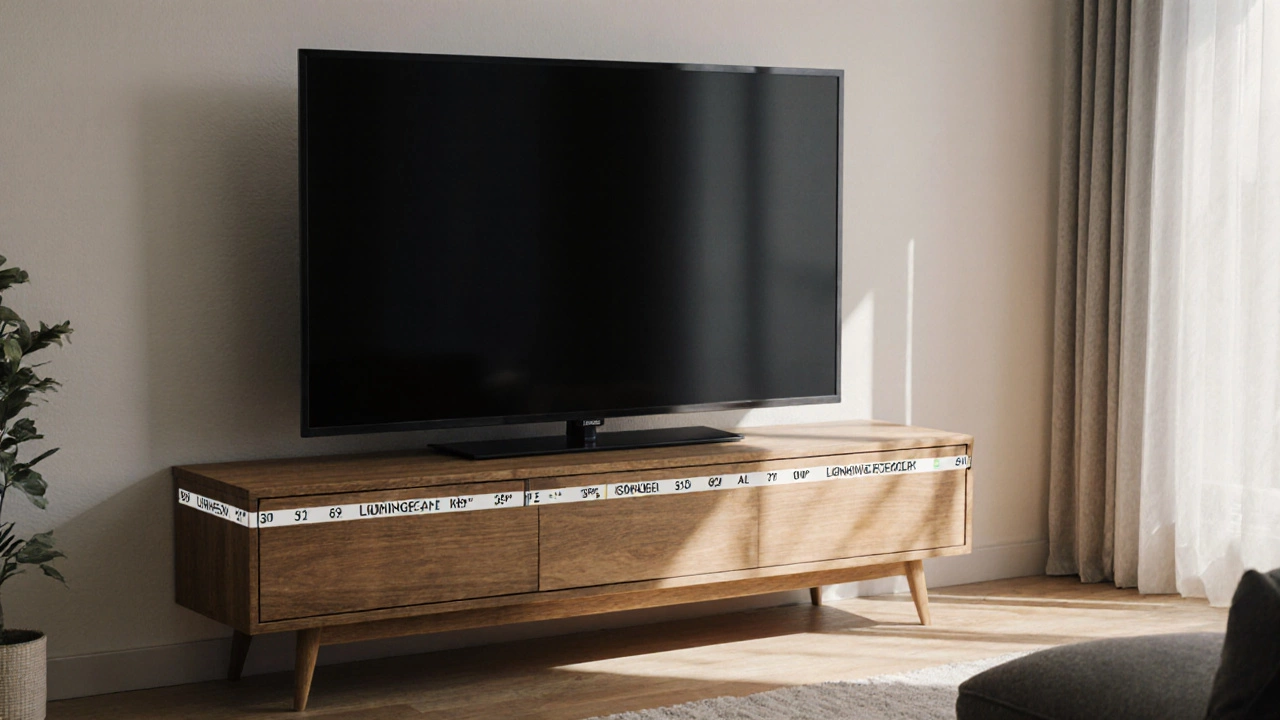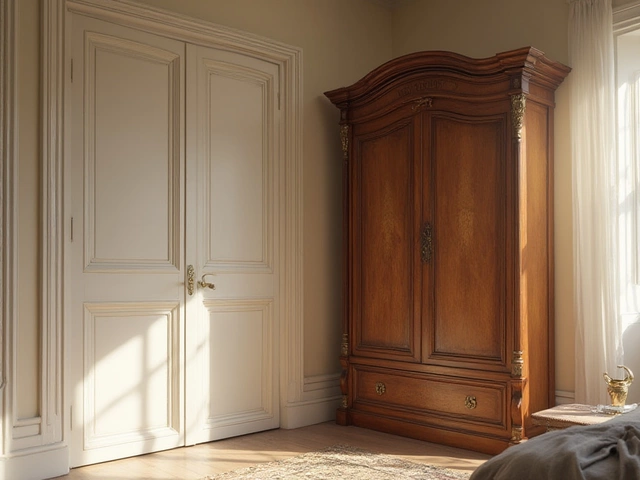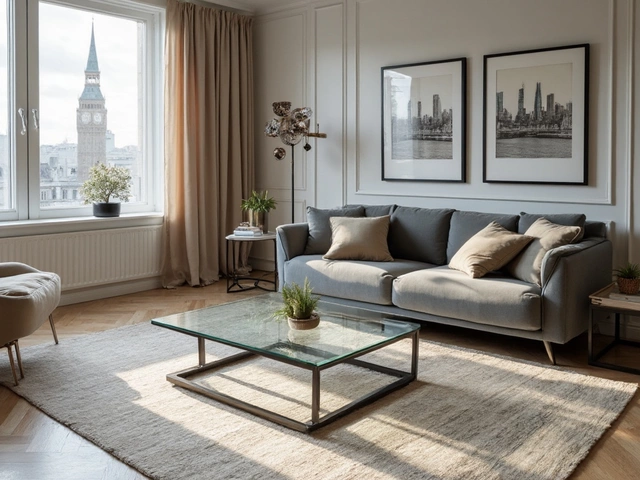TV Stand Compatibility Calculator
Measure Your Setup
Results
Wondering if your massive 75 inch TV on 60 inch stand will actually stay put? You’re not alone - many of us buy a big screen and then scramble to find a piece of furniture that can handle it. The good news? You don’t need a PhD in geometry to figure it out. In the next few minutes we’ll walk through the exact numbers you need, the safety tricks that keep the TV steady, and what to do if the stand just isn’t up to the job.
What "75‑inch" and "60‑inch" Really Mean
First, let’s demystify those numbers. A 75‑inch TV a television whose screen measures 75 inches from corner to corner is defined by its diagonal length, not its width. The actual width depends on the aspect ratio (most modern TVs use 16:9) and the thickness of the bezels.
In practice, a 75‑inch screen is about 65.4 inches wide and 36.8 inches tall, assuming a 16:9 ratio and thin bezels. A 60‑inch TV stand a furniture piece marketed to hold televisions up to roughly 60 inches wide usually refers to the maximum TV width the stand is rated for. However, manufacturers often quote the stand’s overall width, which can be a few inches wider than the TV it’s meant to hold, to give room for ventilation and cable routing.
How to Measure Your TV and Stand Accurately
The safest way to avoid a surprise is to measure both items yourself. Grab a tape measure and follow these steps:
- Place the TV on a flat surface and measure the distance from the left edge of the screen (excluding the bezel) to the right edge. Write that number down as TV width.
- Do the same for the height, measuring from the top of the screen to the bottom. You’ll need this later for clearance checks.
- Measure the depth of the TV - from the front of the screen to the back of the chassis. Some ultra‑slim models are under an inch, while older sets can be 3 inches or more.
- On the stand, measure the top surface width from edge to edge. This is the critical stand width the horizontal space available for a TV on the shelf.
- Measure the stand’s depth (front to back) and note any lip or overhang that might affect the TV’s rear clearance.
- Check the stand’s weight capacity, usually printed on a label or in the product manual. Write this as max weight.
Now you have hard numbers to compare - no guesswork.
Compatibility Checklist: Width, Depth, and Weight
With your measurements in hand, run through this simple table. If any red flag pops up, you’ve found a potential problem.
| Parameter | 75‑inch TV | 60‑inch Stand | Fit? |
|---|---|---|---|
| Screen width (incl. bezels) | ≈ 65.4 in | Usually 60-62 in | No - TV is wider than stand |
| Depth (TV) | 1.5-3 in (varies) | 10-12 in (shelf depth) | Yes - stand is deeper |
| Weight (TV) | ≈ 65 lb (average) | Max ≈ 70 lb (label) | Yes - within capacity |
From the table you can see the biggest issue is the width: the TV overhangs the stand by about 3-5 inches on each side. That’s not just an aesthetic problem; it can cause the TV to tip if the stand isn’t anchored.
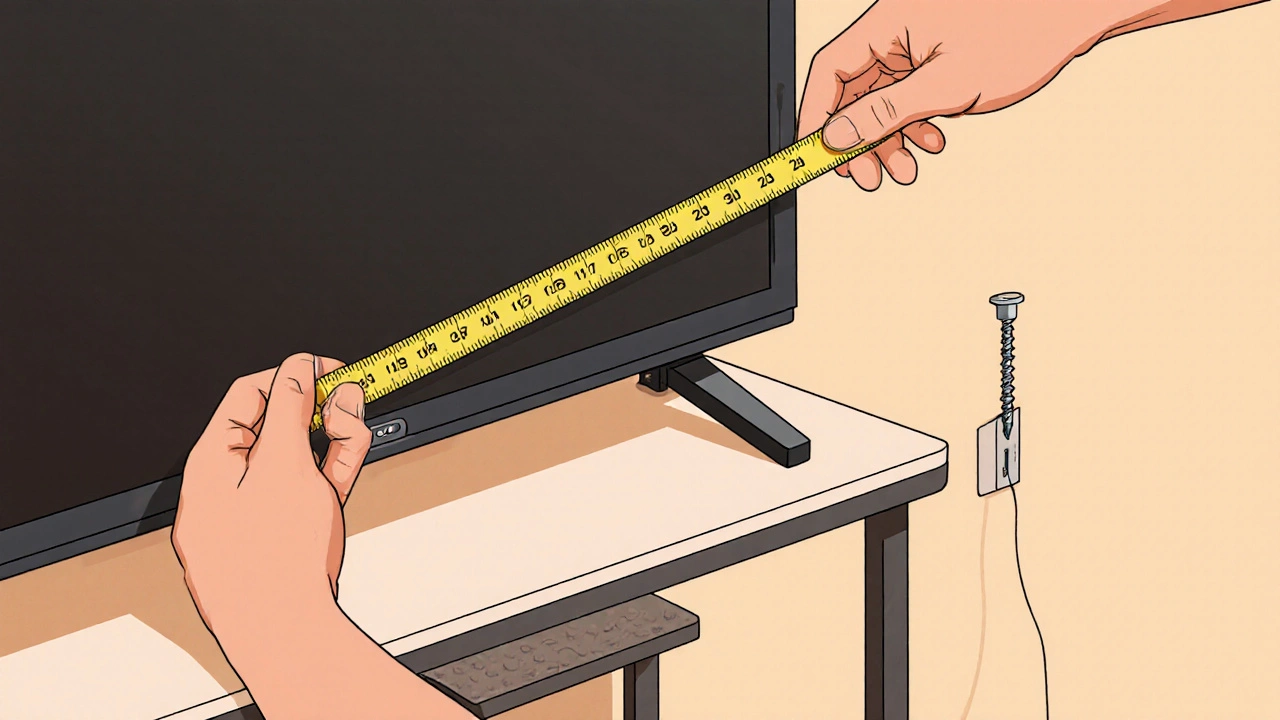
Stability & Safety - Why Width Matters
Even if the stand can bear the weight, a TV that extends beyond the edges shifts the center of gravity the point where the TV’s mass balances forward. A forward‑shifted center can make the stand wobble or, worse, tip over if you bump the TV or the stand.
Here are three practical steps to improve stability:
- Secure the stand to the wall. Use a simple L‑bracket or the pre‑drilled holes most stands have. A wall anchor reduces tipping risk dramatically.
- Place a non‑slip mat or rubber pads under the stand’s legs. This adds friction on hardwood or carpet.
- Balance the load. If you have speakers or décor on the opposite side of the TV, keep them light to offset the overhang.
Remember, the floor type matters too. Tile or hardwood offers a stable base, while a plush carpet can let the stand shift under weight.
What to Do If the TV Doesn’t Fit
Finding yourself with a 75‑inch screen and a 60‑inch platform is a common dilemma. Luckily, there are several workarounds that don’t force you to dump your new TV.
1. Upgrade to a larger stand
Look for a stand marketed for 75‑inch or larger TVs. Many modern media consoles are 70-80 inches wide and still fit comfortably in a typical living‑room layout.
2. Wall‑mount the TV
A wall mount a bracket that secures the TV to a wall studs eliminates the need for a wide stand altogether. Make sure the mount’s VESA pattern matches your TV’s (usually 400 mm × 400 mm for 75‑inch models) and that the wall studs can hold the TV’s weight.
3. Use a VESA adapter plate
If your current stand has a built‑in bracket that only fits up to 60‑inch models, you can buy a VESA mount a universal mounting plate that adapts TVs to various stands. The adapter adds a small spacer, giving you a few extra inches of width.
4. Add a decorative ledge or trim
Place a wooden or glass ledge on either side of the stand to catch the TV’s overhang. It looks intentional and prevents the TV from sliding.
5. Re‑arrange the room
If you have space, consider moving the TV to the opposite wall where a larger piece of furniture is already present. This can also improve viewing angles.
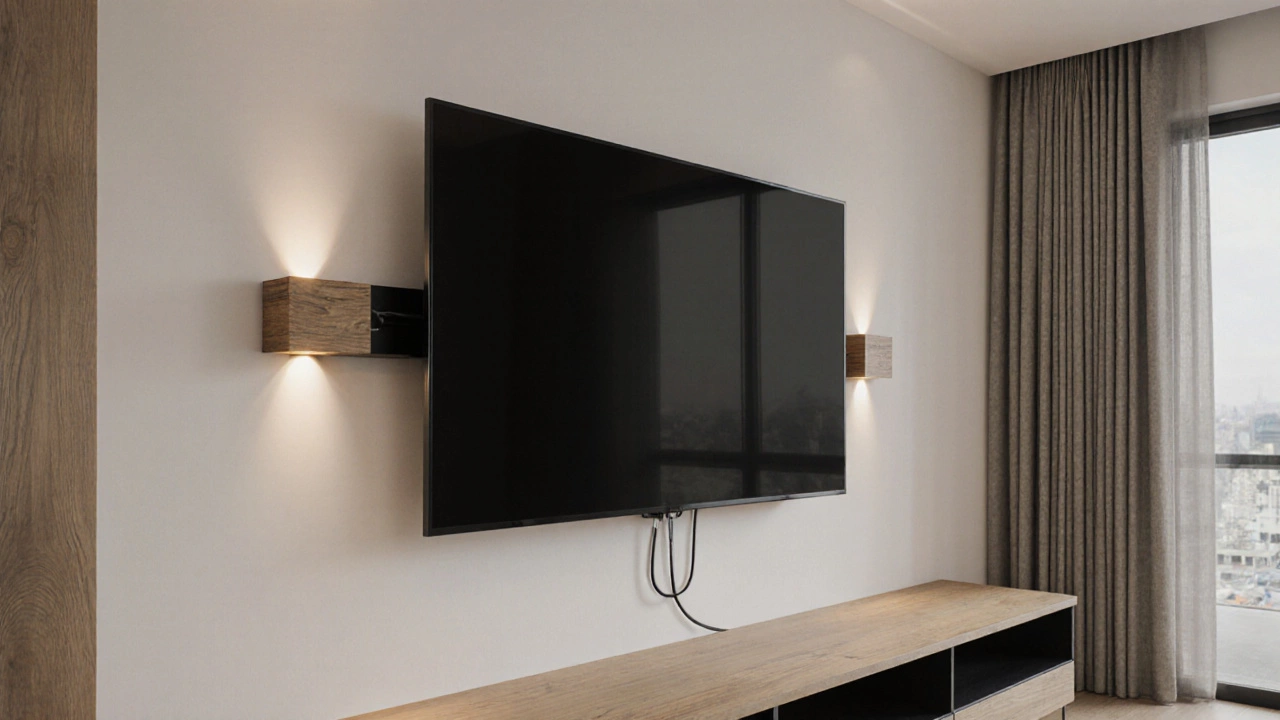
Aesthetic & Practical Tips
Even when the TV fits, you’ll want it to look right. Here are a few quick ideas:
- Cable management. Use a cable raceway or zip ties to keep cords hidden behind the stand.
- Leave at least 2‑3 inches of space between the TV back and the wall for ventilation - especially important for larger screens that generate more heat.
- Keep decorative items low and centered to maintain visual balance if the TV overhangs.
- Consider adding a soft‑close pull‑out shelf beneath the TV for gaming consoles or streaming boxes - this keeps the floor area tidy.
Quick Fit Checklist
- Measure TV screen width (including bezels).
- Measure stand top width.
- Ensure TV width ≤ stand width (or accept overhang with safety measures).
- Check stand depth vs. TV depth.
- Confirm TV weight ≤ stand’s max weight.
- Secure stand to wall or use non‑slip pads.
- Plan cable routing and ventilation.
- Consider alternatives if any check fails.
Frequently Asked Questions
Can a TV that’s slightly wider than the stand still be safe?
Yes, as long as you secure the stand to the wall, use non‑slip pads, and keep the TV’s center of gravity over the stand’s base. The overhang should be minimal (no more than 2‑3 inches per side).
What’s the typical weight of a 75‑inch TV?
Most modern 75‑inch LED/LCD models weigh between 60 and 70 pounds (27-32 kg). OLEDs can be a bit heavier due to additional layers.
Do I need a VESA‑compatible stand?
If the stand has a built‑in bracket, it should list a VESA pattern (e.g., 400 × 400 mm). If the TV’s VESA pattern is larger, you’ll need an adapter plate or a stand that supports that size.
Is wall‑mounting safer than using a stand?
Wall‑mounting removes the tipping risk completely, but it requires solid studs and a proper mount. If you’re renting, a stand with wall anchors is often the safer, non‑permanent choice.
How far should the TV be from the wall for ventilation?
Leave at least 2‑3 inches (5‑8 cm) of clearance at the back of the TV. This allows heat to escape and prevents overheating of internal components.
